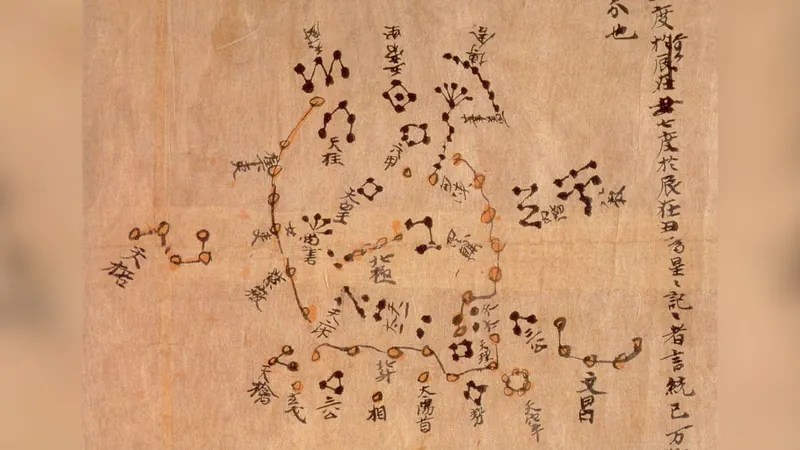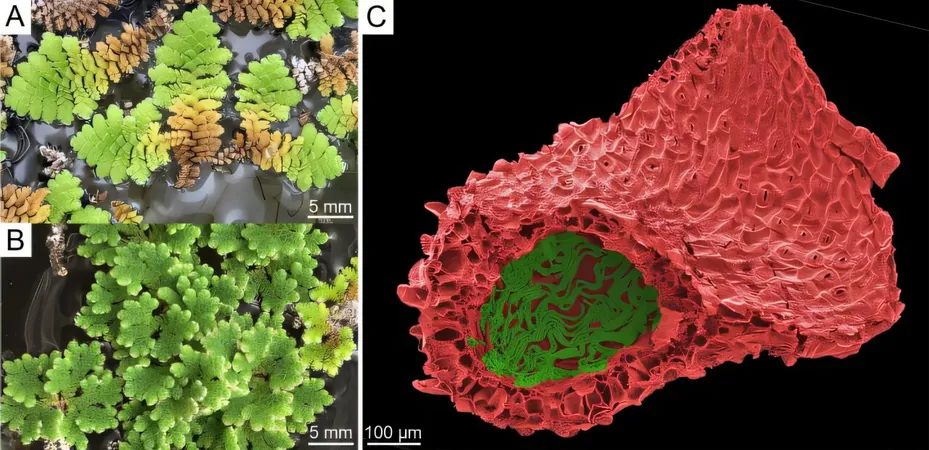
Astronomers Unravel 600-Year-Old Mystery of Ancient 'Guest Star'!
2025-06-03
Author: Sarah
A Celestial Enigma Unveiled
In the autumn of 1408, during the Ming Dynasty in China, sky-watchers were captivated by a dazzling celestial phenomenon. A luminous yellow object, described as 'as large as a cup' and 'pure yellow in color,' graced the heavens for over ten nights. Its brilliance was so extraordinary that it was officially documented by imperial astronomers—a record that would baffle historians and astronomers for over six centuries.
Rediscovery of a Historic Document
Fast forward to today, and we find a breakthrough in this age-old mystery! Researchers, led by Boshun Yang from the University of Science and Technology of China, have uncovered an overlooked report from Hu Guang, a court official responsible for grand declarations to the emperor. This archival treasure, originating from the Imperial Astronomical Bureau, presents a richer narrative of the event, dismissing theories of forgery and misinterpretation.
A Star That Stood Still
This ancient account indicates that the mysterious object remained stationary in the southern Niandao asterism, an area now identified with modern constellations like Cygnus and Vulpecula. Unlike comets or meteors that dart across the sky, this celestial body held its ground, shining steadily—an indication that it was likely a star.
The Nova Revelation
Intriguingly, the characteristics of this 'guest star' match those of a nova—a spectacular stellar explosion where a star temporarily brightens dramatically before fading. Yang and his colleagues believe that the 1408 nova displayed 'plateau' characteristics, maintaining its glow longer than typical novas.
Politics and Perception in Celestial Reports
The researchers also had to traverse the delicate political landscape of historical celestial reporting. Ancient Chinese astronomers chose their words meticulously when detailing cosmic events for the emperor, ensuring the descriptions exuded positivity. Instead of invoking fear with terms like 'spikes,' they portrayed the star as 'yellow and lustrous,' choosing gentler language to keep royal spirits high.
Connecting the Past to the Present
By integrating this newfound historical evidence with contemporary astrophysical insights, Yang's team convincingly argues that the 1408 'guest star' was indeed a nova. This revelation enriches the lineage of ancient Chinese astronomical records, which seamlessly align with modern astronomical discoveries. Similar to the historic 1054 supernova that birthed the Crab Nebula—vividly captured by modern telescopes like Webb—this astounding discovery reminds us that what seems distant in human history is merely a blink in the cosmic timeline.



 Brasil (PT)
Brasil (PT)
 Canada (EN)
Canada (EN)
 Chile (ES)
Chile (ES)
 Česko (CS)
Česko (CS)
 대한민국 (KO)
대한민국 (KO)
 España (ES)
España (ES)
 France (FR)
France (FR)
 Hong Kong (EN)
Hong Kong (EN)
 Italia (IT)
Italia (IT)
 日本 (JA)
日本 (JA)
 Magyarország (HU)
Magyarország (HU)
 Norge (NO)
Norge (NO)
 Polska (PL)
Polska (PL)
 Schweiz (DE)
Schweiz (DE)
 Singapore (EN)
Singapore (EN)
 Sverige (SV)
Sverige (SV)
 Suomi (FI)
Suomi (FI)
 Türkiye (TR)
Türkiye (TR)
 الإمارات العربية المتحدة (AR)
الإمارات العربية المتحدة (AR)